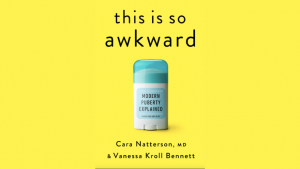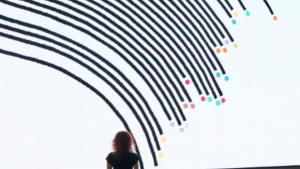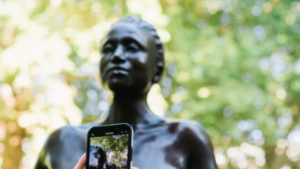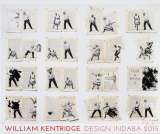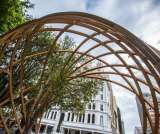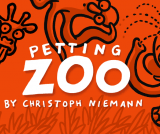Part of the Project
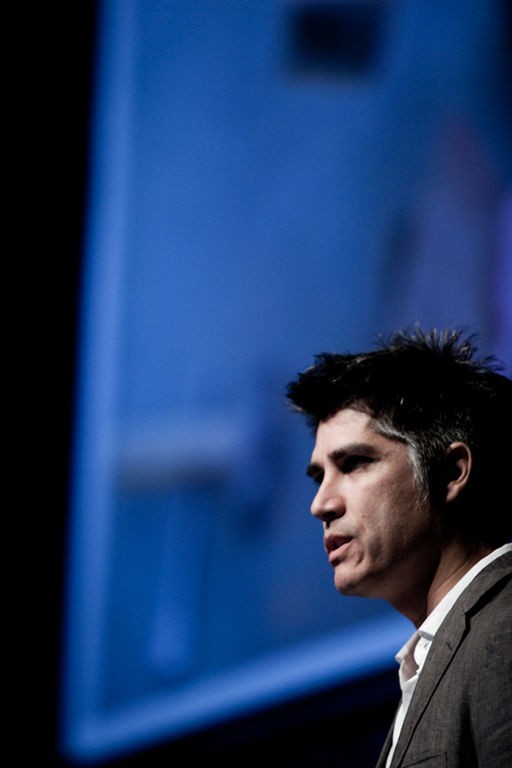
The Design Indaba Conference 2010 mushroomed in scale, attention and diversity. Running from 24 to 26 February at the Cape Town International Convention Centre, over 40 speakers addressed more than 2400 delegates over three days. The main plenary sold out for the sixth year running. Opening up the Young Designer’s Simulcast for professionals, this too was sold out, for the first time. Some 100 international and local media also attended.
Topics ranged from puppetry to social solutions, from traditional design disciplines to radically new design genres, turning the Design Indaba Conference into an elixir of creativity and innovation. Adding a curveball to the mix, mystery speaker Dr J Craig Venter even talked about the possibility of designing life, via live satellite link to La Jolla in the US.
Nor was Design Indaba Conference 2010 without controversy. In a Friday morning of power-women, the seasonal Li Edelkoort began talking about the redefinition of families and radically concluded with a future vision of the bordello. Following her were Han Feng and Christien Meindertsma, and then… Blockbuster homemaker, Martha Stewart. Literally splitting the audience in half, Stewart’s presentation goes down as the most talked-about event at Design Indaba in the 15 years of its existence. Nonetheless, some 900 fans convened the following day for the dedicated Martha Stewart presentation hosted by Design Indaba Expo and Woolworths.
A number of collaborative presentations further differentiated this year’s conference programme. Wooster Collective and Faith47 presented on street art, while Handspring Puppet Company and ZA News presented on puppetry. Design Indaba’s Protofarm 2050 team presented their work commissioned for the 2009 ICSID World Design Congress in Singapore. And, for the second time, top design graduates from around the world impressed the audience thoroughly with some of the most extreme work on stage.
Thematic strands that stretched across all three days included speakers from the BASIC countries – Marcello Rosenbaum from Brazil, Mokena Makeka from South Africa, Piyush Pandey from India and Feng from China. Always a hot favourite are the graphic design contingent includingHarry Pearce, Michael Bierut, Manabu Mizuno and William Drenttel. Reviving a key theme from last year, speakers such as Tord Boontje,Ronan Bouroullec, Troika and Christien Meindertsma considered the balance between craft and industry. As Bruce Nussbaum commented: “We must return to a making culture instead of just a consuming culture.”
Stretching the Design Indaba Conference stage beyond the confines of the convention centre, Stefan G Bucher demonstrated his monster-making technique live at the Design Indaba party. Filmmakers Eames Demetrios, Doug Pray and Gary Hustwit participated in a panel discussion lead by Bierut at the conference, and went on to introduce their films in the first Design Indaba Film Festival, held at the Labia on Orange.
Finally, in a summation of the three-day tour de force, Chilean architect Alejandro Aravena said it all in two sentences: “Creativity is what you do when there is not enough knowledge. If you have knowledge, you do not need creativity.” His radically innovative solutions to low-cost housing were received with a rousing standing ovation, avowing Design Indaba’s primary statement of “a better world through creativity”.
But it doesn’t end there. Living by “a better world through creativity” throughout the year, Design Indaba also announced two exciting new projects. Royal College of Art associate professor Jurgen Bey announced a collaborative project in which 10 of his students paired up with 10 Design Indaba Expo exhibitors to design, develop and produce a new product. From Carleton University in Ottawa, Canada, a second delegation of international students are developing a system of low-cost furniture in collaboration with Design Indaba’s 10x10 Low-Cost Housing project.


